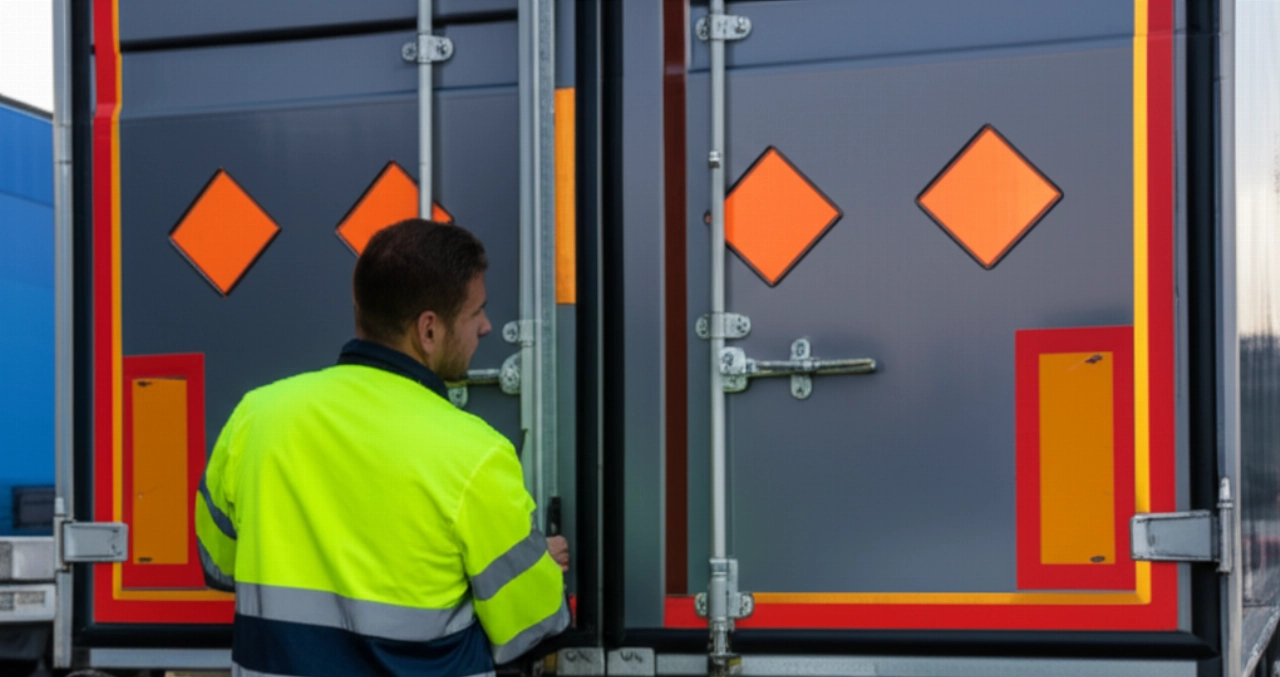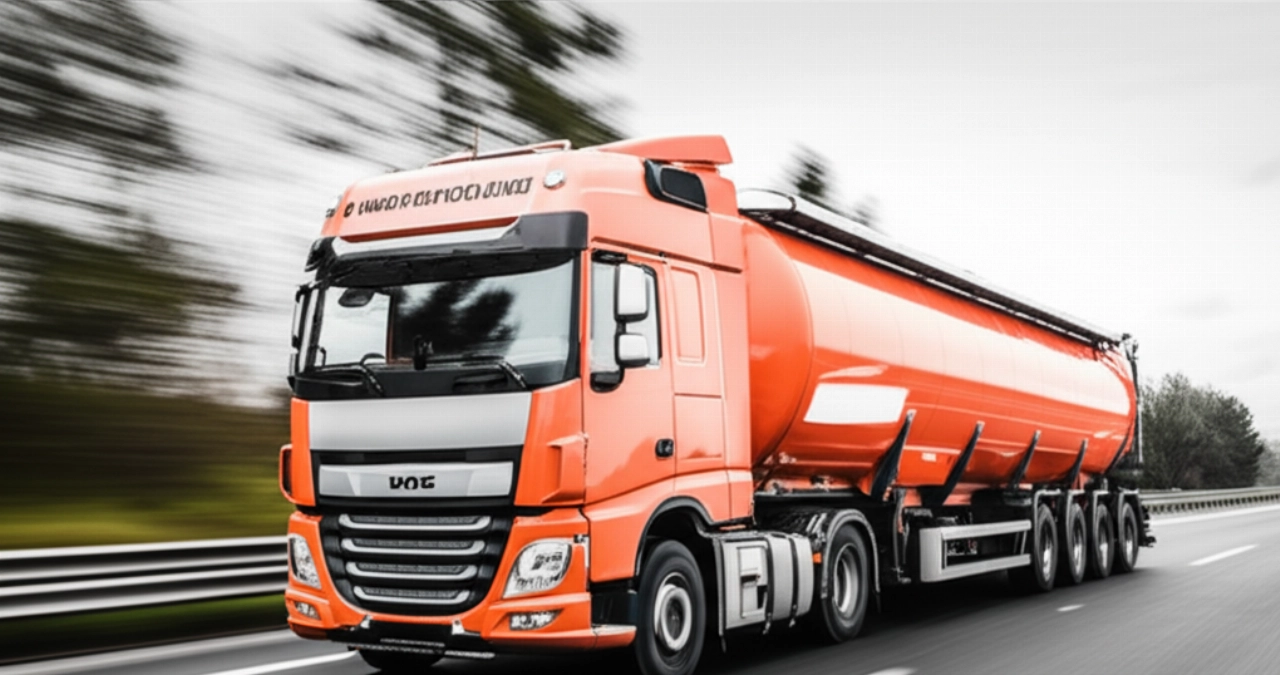Do you need to ship materials classified as dangerous and the mere thought of ADR regulations gives you a headache? Do you know that an error in ADR dangerous goods transport is not just a cost, but an enormous risk to safety, the environment, and your company's reputation? The complexity of regulations, risk classes, specific documents... it can seem like a maze with no way out.
In this guide, we won't leave you alone. We will provide you with the clarity and expertise needed to navigate the world of ADR transport, ensuring that every shipment is not only compliant but also safe and without surprises. Your peace of mind is our priority. Let's begin.

Beyond Transport: Why ADR Compliance is Your First Line of Defense
When it comes to ADR dangerous goods transport, we are not simply moving an object from point A to point B. We are managing an enormous responsibility. Every shipment of materials classified as dangerous, whether chemical products, flammable gases, explosives, or lithium batteries, is regulated by a stringent international code: ADR (European Agreement concerning the International Carriage of Dangerous Goods by Road).
Ignoring or underestimating these regulations doesn't just mean risking hefty fines. It means jeopardizing people's safety, causing irreparable environmental damage, and irrevocably compromising your company's reputation. Even a small incident due to negligence or ignorance of ADR rules can have devastating consequences.
For this reason, ADR compliance is not a cost, but an essential investment in the safety, legality, and peace of mind of your business. Relying on a partner who not only knows the rules but applies them with meticulous rigor means protecting your assets and your tranquility.

Deciphering ADR: Risk Classes, Documentation, and Essential Requirements
The world of ADR dangerous goods transport is complex, but not incomprehensible. The key is knowledge and rigorous application of regulations. Here's a simplified overview of the fundamental pillars:
ADR Risk Classes: Knowing Your Goods
Dangerous goods are divided into 13 classes, each with specific risk characteristics and transport requirements. Some examples include:
- Class 2: Gases (e.g., LPG, oxygen)
- Class 3: Flammable liquids (e.g., gasoline, paints)
- Class 4.1: Flammable solids
- Class 5.1: Oxidizing substances
- Class 6.1: Toxic substances
- Class 8: Corrosive substances (e.g., sulfuric acid)
- Class 9: Miscellaneous dangerous substances and articles (e.g., lithium batteries, asbestos)
Each class requires a specific approach in terms of packaging, labeling, and transport conditions. It is essential that your goods are correctly classified and identified with their UN number.
Mandatory Documentation: Your Safety ID Card
Before your goods move, it is essential to prepare a series of documents that attest to their nature and compliance with regulations. The main ones are:
- Transport Document (DDT) or Consignment Note (CMR): Must contain all information related to the goods, including their ADR classification.
- Shipper's Declaration: A document in which the shipper certifies that the goods have been packed, labeled, and declared in accordance with ADR regulations.
- Safety Data Sheets (SDS): For each product, the safety data sheet provides detailed information on risks and emergency measures.
An error or omission in these documents can block the shipment or, worse, cause serious problems in case of inspection or incident.
Packaging, Labeling, and Specialized Vehicles: Never Leave Anything to Chance
ADR dangerous goods transport requires:
- Approved packaging: Specific containers, tested and certified to withstand transport stresses and safely contain the goods.
- Hazard labels: Each package must be clearly labeled with hazard pictograms and ADR information.
- Specialized vehicles: Trucks and vans must be equipped for ADR transport, with fire extinguishers, personal protective equipment, and specific signage.
- Trained drivers: Only personnel with specific ADR training and certification can transport these goods.
Understanding these requirements allows you to competently interact with your logistics partner and ensure that every step is managed with the utmost professionalism.

The Improvisation Trap: The Hidden Risks of Uncertified ADR Transport
In the desire to save money, you might be tempted to rely on non-specialized transporters or platforms that promise rock-bottom prices for ADR dangerous goods transport. This is the gravest mistake you can make.
An improvised transporter will not only lack the necessary certifications and equipment but will often ignore complex ADR regulations. This exposes you to enormous risks:
- Hefty fines and penalties: ADR violations are punished with very heavy financial penalties, both for the transporter and the consignor.
- Goods blockage: Authorities can stop and seize your shipment if it's non-compliant, causing unacceptable delays and additional costs.
- Reputational damage: An incident or non-compliance can destroy years of work and the trust of your clients and partners.
- Safety and environmental risks: The greatest danger. Unsafe transport can lead to spills, fires, explosions, with disastrous consequences for people and the ecosystem.
Remember: when it comes to dangerous goods, initial "savings" almost always turn into infinitely greater costs. Your peace of mind and everyone's safety are priceless.
TrasportoMerci.net: Your Certified Partner for Worry-Free ADR Shipments
Having understood the complexity and risks of ADR dangerous goods transport, choosing the logistics partner becomes the most critical decision. At TrasportoMerci.net, we are not just transporters; we are your certified consultants and partners for every ADR need.
Our promise is your safety and peace of mind. How do we guarantee it?
- Certified Expertise: Our team includes qualified ADR consultants and drivers with specific and updated training, capable of managing every hazard class.
- Specialized Fleet: We have vehicles equipped and approved for ADR transport, subjected to rigorous checks and fitted with all necessary safety equipment.
- Impeccable Document Management: We assist you in preparing all necessary documentation (DDT, CMR, SDS, shipper's declarations), ensuring maximum compliance and preventing blockages or penalties.
- Risk Assessment and Tailored Solutions: Every ADR shipment is unique. We carefully analyze the nature of your goods, the route, and your needs to offer you the safest and most efficient solution, for both full truckloads (FTL) and ADR groupage.
- Traceability and Constant Communication: We know how important it is to be informed. We offer advanced tracking systems and always available customer support to update you on the status of your shipment.
By entrusting TrasportoMerci.net, you choose the certainty of a service that goes beyond simple delivery, guaranteeing you maximum protection and compliance at every stage of transport.
Frequently Asked Questions about ADR Dangerous Goods Transport
1. What are the main classes of ADR dangerous goods?
Dangerous goods are classified into 13 main classes, ranging from gases (Class 2) to flammable liquids (Class 3), from flammable solids (Class 4.1) to toxic substances (Class 6.1), up to corrosive substances (Class 8) and other dangerous substances (Class 9), such as lithium batteries. Each class has specific packaging, labeling, and transport requirements.
2. What documents are mandatory for an ADR shipment?
For an ADR shipment, the Transport Document (DDT) or Consignment Note (CMR) showing the correct ADR classification of the goods, the Shipper's Declaration attesting to the compliance of packaging and labeling, and the Safety Data Sheets (SDS) of the transported products are mandatory. Our team will support you in preparing all documentation.
3. Is my cargo insured during ADR transport?
Yes, your cargo is covered by standard carrier insurance, as required by law. However, given the nature of dangerous goods, we always recommend considering additional "All Risks" insurance to cover all eventualities and ensure maximum protection of your shipment's value. We can provide you with all necessary information.
4. How should I properly pack dangerous goods?
The packaging of dangerous goods must be carried out using approved and certified containers for the specific risk class and packaging group of the goods. It is essential that the packaging is robust, correctly sealed, and bears all required hazard labels and ADR marks. We will provide you with precise instructions based on your goods.
5. How long does it take to organize an ADR shipment?
Organizing an ADR shipment requires more accurate planning than standard transport, due to stringent regulations and the need for specialized vehicles and personnel. Times may vary based on the complexity of the goods, distance, and vehicle availability. We recommend contacting us in advance for a precise evaluation and to organize the shipment as efficiently as possible.
Now you have a clear vision of how crucial it is to rely on experts for ADR dangerous goods transport. It's not just a matter of shipping, but of safety, compliance, and protecting your business.
Perhaps you think the complexity of ADR transport is insurmountable or that such a specialized service is prohibitive. In reality, the true cost is the error, the penalty, the damage. Investing in a certified partner guarantees you peace of mind and frees you from every worry.
Don't leave the safety of your shipment to chance. Your dangerous goods deserve the utmost care, and your company the utmost protection. The first step costs nothing: it's a personalized consultation on your specific ADR transport needs. Click here, describe your goods, and receive a clear, detailed quote compliant with all regulations. Discover the certified solution for you now.
Now that you know everything about ADR dangerous goods transport, discover how to manage warehouse logistics for special goods or delve into the differences between FTL and LTL transport for complex loads. You can also read our guide on how to choose the ideal logistics partner.